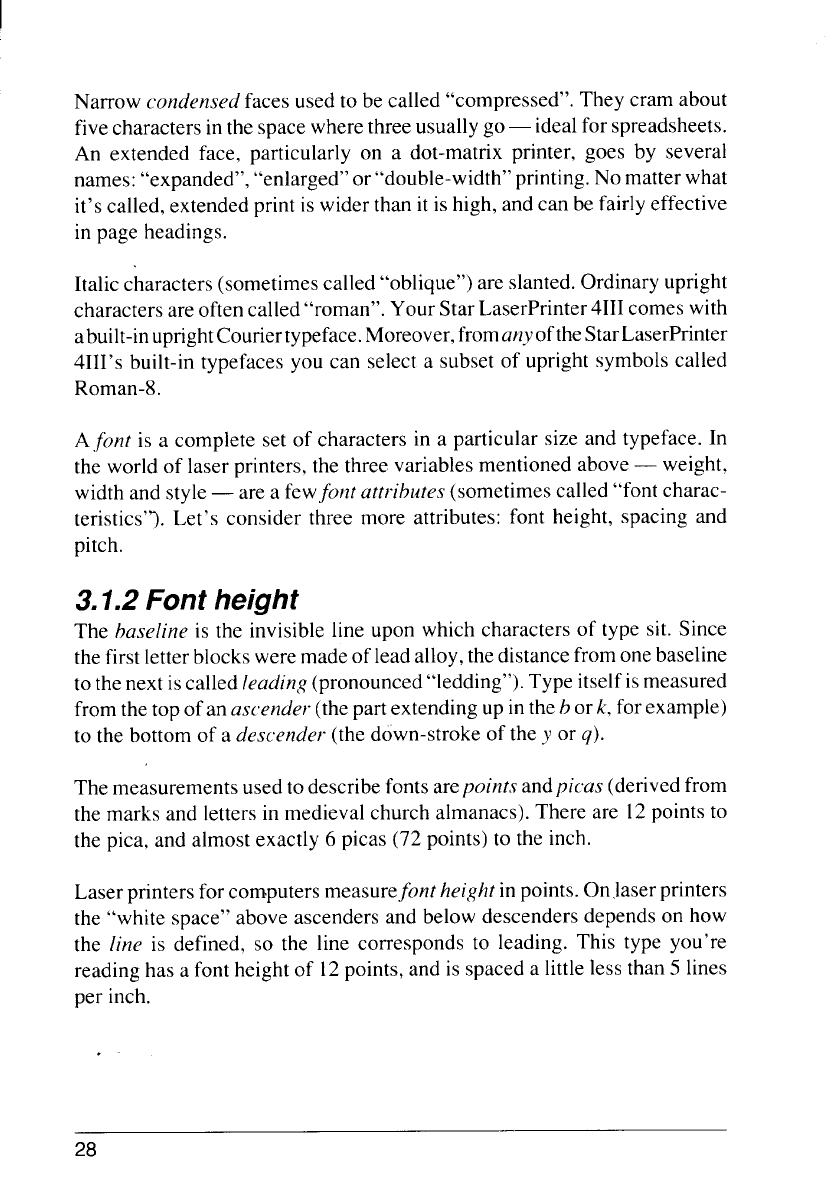
I
Narrow condensed faces used to be called “compressed”. They cram about
five characters in the space where three usuallygo — ideal for spreadsheets.
An extended face, particularly on a dot-matrix printer, goes by several
names: “expanded
“, “enlarged” or “double-width” printing. No matter what
it’s called, extended print is wider than it is high, and can be fairly effective
in page headings.
Italic characters (sometimes called “oblique”) are slanted. Ordinary upright
characters are often called “roman”. Your Star LaserPrinter 4111comes with
abuilt-in uprightCouriertypeface.Moreover,fromanyoftheStarLaserPrinter
4111’sbuilt-in typefaces you can select a subset of upright symbols called
Roman-8.
A,font is a complete set of characters in a particular size and typeface. In
the world of laser printers, the three variables mentioned above — weight,
width and style— are a few~ont attributes (sometimes called “font charac-
teristics”). Let’s consider three more attributes: font height, spacing and
pitch.
3.1.2 Font height
The baseline is the invisible line upon which characters of type sit. Since
the first letter blocks were made of lead alloy, the distance from one baseline
to the next is called leading (pronounced “ledding”). Type itselfismeasured
from the top of an uscender (the part extending up in the b or k, for example)
to the bottom of a descender (the down-stroke of they or q).
The measurements used to describe fonts arepoints andpicas (derived from
the marks and letters in medieval church almanacs). There are 12points to
the pica, and almost exactly 6 picas (72 points) to the inch.
Laser printers for computers measure~ont height in points. Onlaser printers
the “white space” above ascenders and below descenders depends on how
the line is defined, so the line corresponds to leading. This type you’re
reading has a font height of 12points, and is spaced a little less than 5 lines
per inch.
28


















